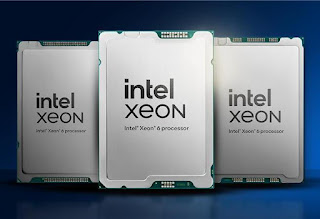For decades, Intel reigned unchallenged in the server CPU arena, boasting market shares nearing 100%. But the tide is turning. Recent industry data reveals Intel’s grip has slipped to just 62% of the server processor market, its lowest in years. While still the leader, rival AMD is gaining unprecedented momentum, narrowing the gap with its EPYC processors and signaling a seismic shift in the data center landscape.
The Slow-Motion Shakeup
Intel’s decline has been years in the making. Once synonymous with server chips, the company faced manufacturing delays, supply constraints, and architectural stagnation. Meanwhile, AMD’s Zen-based EPYC CPUs—launched in 2017—disrupted the status quo with superior core density, energy efficiency, and competitive pricing. Cloud giants like AWS, Microsoft Azure, and Google Cloud swiftly adopted EPYC, eroding Intel’s stronghold.
By early 2024, AMD’s server CPU share surged to 23%, up from single digits five years ago. Analysts attribute this to AMD’s relentless innovation cycle and Intel’s missteps. "AMD’s 4th Gen EPYC ‘Genoa’ chips forced Intel into a defensive position," notes TechInsights analyst Raj Patel. "Sapphire Rapids was late, and customers lost patience."
A Projected Freefall?
A startling projection from Hardwareluxx suggests Intel’s share could plummet to 48% by 2025. The report, drawing from supply chain data and OEM forecasts, warns that AMD’s 5th Gen EPYC "Turin" CPUs—set for late 2024—could accelerate the reversal.
🔍 Deep Dive: How Intel’s Server CPU Share Fell From Near-100% to 48% (Hardwareluxx)
The AI Wildcard
Artificial intelligence workloads are reshaping priorities. AMD’s MI300X AI accelerators—paired with EPYC CPUs—are winning over hyperscalers, while Intel’s Gaudi chips struggle for traction. As cloud providers prioritize AI-optimized infrastructure, AMD’s integrated solutions threaten Intel’s recovery.
Industry tracker Jukanlosreve highlighted this trend in a recent analysis, noting that "AMD’s 30% year-over-year server revenue growth is cannibalizing Intel’s core enterprise business."
🚨 Market Pulse: Jukanlosreve on X: Intel vs. AMD Server Share Trajectory
Intel’s Fightback
Intel isn’t conceding. Its upcoming "Granite Rapids" and "Sierra Forest" CPUs promise massive efficiency gains, with the latter featuring 288 efficiency cores—a direct counter to AMD’s density advantage. CEO Pat Gelsinger’s "five nodes in four years" strategy aims to reclaim manufacturing leadership by 2025. Still, skepticism lingers. "Execution is key," warns Morningstar’s Logan Park. "Another delay could be catastrophic."
The Bigger Picture
The narrowing gap between Intel and AMD is a win for the industry. Competition has slashed server CPU prices by up to 40%, lowered power consumption, and accelerated innovation. As enterprises and cloud providers diversify procurement, AMD’s rise ensures Intel can no longer rest on its laurels.
What’s Next?
- AMD eyes 30% market share by 2025, per internal targets.
- Intel’s foundry business could offset chip losses if it attracts major clients.
- ARM-based entrants (Ampere, NVIDIA) loom as wildcards.
In the high-stakes server CPU war, the only certainty is change. Intel remains the giant, but AMD’s footprints are deepening—and the data center battlefield will never look the same.



Post a Comment